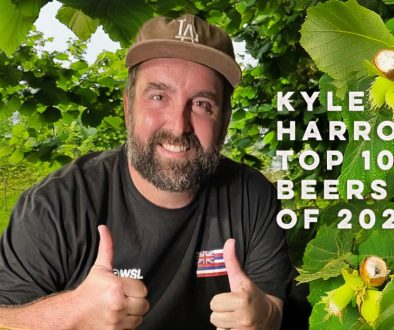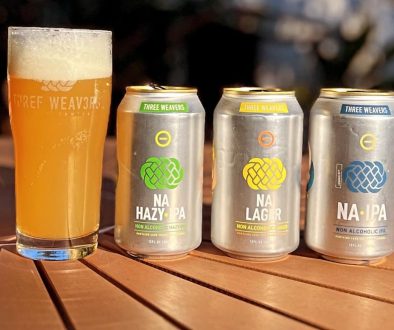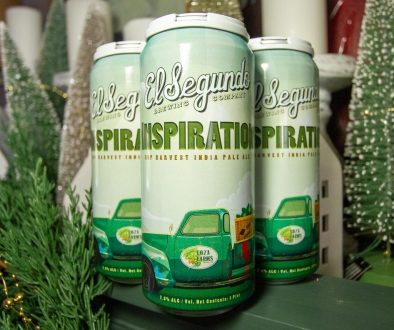Pucker Up: The Sour Beer Movement is Here to Stay
Love them or hate them, the trend of sour beers is far from over. In fact, it’s spawned an uber-popular new niche in the craft beer industry, giving brewers a new outlet to experiment with ingredients and fermentation techniques, and a whole new appreciation for yeast and bacteria…
But what is a sour a beer? The art of intentionally making beers that are sour to the taste can involve many different brewing techniques. It can be done over a long period of time aging in fermentation vessels like oak barrels (the traditional method), or over a short period of time (think kettle sours—the new school method). It most likely features some combination of Lactobacillus, Saccharomyces, Brettanomyces, or Pediococcus yeast cultures as part of the ingredients list. Lambic, Gose, and Berliner Weisse are all styles that fall in the family of sour beers, but it’s American-style sours and wild and spontaneous ales that are currently all the rage throughout brewhouses in the U.S.—mostly due to the fact that the rules of these styles of beer are still being written. It was somewhere in the first decade of the twenty-first century, sometime in between the craft beer industry’s over-hopped IPA phase, and the (understandably) subsequent phase of lighter session beers, that the sour trend first emerged. And from the sour trend, some of America’s most iconic brewery’s with some of the most devout and cult-like followers, were born.
Take Jolly Pumpkin Artisan Ales, for example. When owner Ron Jeffries opened up his boutique brewery in 2004 in the very small town of Dexter, Michigan, most of the craft breweries currently operating in the U.S. today were just a twinkle in some homebrewers eye. But over a decade later, Jolly Pumpkin has become a mecca, a sought-out destination for people that enjoy a complex, flavorful sour beer. The insane popularity of Jolly Pumpkin has catapulted Jeffries to celebrity status in the industry, and has enabled the famed brewer to open additional brewpub locations in Ann Arbor, Traverse City and Detroit—solidifying a steady future for sour beers—at least in the state of Michigan.
In Oregon, Portland-based Cascade Brewing, an award-winning brewery and barrel house, the concept of sour beers came along more by default and less by intention. Originally founded in 1998, Cascade set out to make traditional ales, but the hopped-up pale ale and IPA craze left owner Art Larrance and brewmaster Ron Gansberg searching for something different. The proximity of wine country left the two pondering the process of barrel aging, and in 2007, the brewery started their journey to becoming one of the leading producers of sour beers in the U.S. The brewery’s huge barrel house features roughly 1,400 French oak, Kentucky Bourbon, and Northwest wine barrels. Discovering and mastering the sour trend gave Cascade the momentum to open a production facility, barrel house, 23,000 square-foot blending house and distribution center, and a restaurant in southwest Portland.
The Pacific Northwest has become a hub for sour beer production, and not by accident. Wine country is full of wine barrels, just waiting to be filled with beer. In Berkley, California, The Rare Barrel opened their doors in 2013, offering only oak barrel-aged sour beers. Self-proclaimed “sour-heads”, the folks behind The Rare Barrel host periodic search parties, allowing an enthusiastic team of craft beer fans to taste their way through the brewery’s barrel house in search of the best rare barrel to make available to the public. Though relatively new to the sour scene, the Rare Barrel continues to make waves throughout the industry, and with beers like Apropos of Nothing—a golden sour aged with elderberries and lavender and a 2015 GABF medal winner—it’s easy to taste why.
And the movement is moving. Down through the state of California, where places like The Bruery and Lost Abbey have become the poster children for sour beers. Perhaps the most industry-celebrated brewery in the sour beer niche is The Bruery, which took the craft beer world and awards ceremonies by storm when they opened their “boutique” craft brewery in Orange County in 2008. With a huge barrel-aging program and vision based on experimental ales, The Bruery’s unique approach to craft beer has earned them eight medals at the Great American Beer Festival in the past seven years. In southern California, Vince Marsaglia of Port Brewing believed in traditional “lost” abbey-style beers and the wonders of barrel aging so much, that he opened Lost Abbey in 2006. Aptly named for multiple reasons, Lost Abbey’s Framboise de Amorosa Barrel-Aged Raspberry Sour will make you believe in heaven. Only a year after opening, back in the early days of the sour movement, Lost Abbey picked up the Small Brewery of the Year award at the Great American Beer Festival, a symbol of what the sour beer trend would become. Lesser known, but gaining steam in their home state of California and beyond, is Sante Adairius Rustic Ales—a small brewery celebrated for their wine barrel-aged beers and yeast and bacteria experimentation. The brewery’s rustic ales are filled with natural ingredients and are created as an ode to traditional Belgian brewing. Tucked away, north of Los Angeles, Jim Crooks and Jeffers Richardson are making amazing wine barrel aged sour ales at the Buellton BarrelWorks facility. BarrelWorks is a must stop regardless of which direction you are headed.
The state of Colorado has also become a sour hub, thanks to one of the most well-known sour beer brewers in the entire craft beer industry. The Crooked Stave Artisan Beer Project stole the sour beer spotlight in 2010 when owner, Chad Yakobson, opened a small operation focused on creating unique, sour tasting beers using traditional aging methods. Just sours. Nothing more, nothing less. Yakobson, who literally has a masters degree in yeast, originally started working on his concept of sour and wild ales by contracting out brewing space at another Denver brewery. From there, Yakobson continued working on his dream, creating only sour beers and building a name for himself, not just in the sour world, but in the always-expanding world of craft beer as well. Today, Yakobson’s success includes a shiny brewhouse complete with a coolship—an old-school piece of brewing equipment that naturally cools down wort—and a bustling distribution business that features a diverse portfolio that includes Melvin Brewing Co. and Blackberry Farms—a Tennessee brewery that specializes in farmhouse ales. Crooked Stave’s unique approach has also spread throughout Colorado, and today, several breweries in the Centennial State have emerged as stand-outs in the craft of sours, like Casey Blending and Brewing, Funkwerks, and Black Project Spontaneous Wild Ales. And when the booming and growing craft beer industry caught up to Colorado-based New Belgium Brewing Company, sparking stunted growth for the brewery’s iconic Fat Tire Amber Ale, New Belgium turned to their barrels to breathe new life into their brand. 2015 saw the brewery focus on the release the Lips of Faith series—a series of speciality sour and barrel-aged brews including La Folie—a sour brown ale that has reignited a new generation of New Belgium patrons.
One of the most elusive players in the sour beer movement is also one of the most well known. Jester King, located in Austin, Texas, has been creating mixed culture and spontaneous fermentation beers since 2011, highlighting natural ingredients found on and around their 200- acre farm. Ever been to a beer festival where Jester King was pouring? Then I’m sure you understand how worth it standing in that massive line to their booth was. Although Jester King beers are some of the most sought after beers in the sour trend, the brewery only produces 1,500 barrels of beer each year, which means if you happen to track one down, you should buy it, immediately.
One of the latest shining stars in the sour beer movement is Corey King and his brewery, Side Project Brewing. This St. Louis brewery has been rocking and rolling since 2014, slowly gaining recognition for it’s line-up made up of 100% barrel-aged beers. In it’s first two years, Side Project gained enough momentum that at the end of 2016, Corey and his wife Karen King were able to open their first tasting room inside of the brewery digs.
And although both Russian River and Wicked Weed specialize in beers outside of the sours, (cough, cough—Pliny), both breweries are making some of the most beloved sour beers on the market. Supplication, Consecration, Sanctification—Russian River plays on their winery past to create delicious barrel-aged sours to go along with their long list of other award-winning and respected brews. And Wicked Weed’s love of experimenting with funky flavors inspired the brewery to open a second brewing facility called the Funkatorium, where they’re brewing up all of their funky and barrel-aged beers and serving them to lucky visitors to the Funkatorium’s taproom.
So no, the sour beer movement isn’t over. With massive growth taking place at sour beer-specific breweries all over the country, it’s clear that the movement is just getting started. At the 2017 Great American Beer Festival awards ceremony, it was announced that the American-Style Sour Ale category had received 142 entries—proof that the trend of sour beers has solidified it’s place in craft beer. Breweries like Avery Brewing Company in Boulder, Colorado are rapidly expanding their barrel-aging programs and even throwing massive sell-out sour beer festivals. Not on board with the sour beer movement yet? Not sure about beers that will make you pucker up and are described with words like funky and tart? Then grab a bottle from one of the breweries above. As the sour beer trend continues to grow and settle in, more and more breweries are dabbling in sour beers—and they’re doing ‘em up right.




